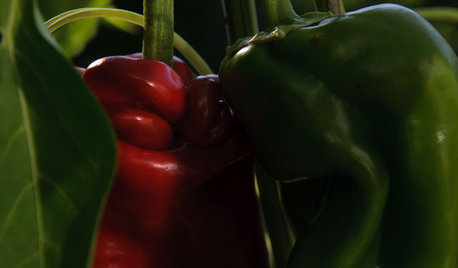A few days ago I canned peppers from my garden. This was my first time canning and first time gardening. I used a boiling water method recipe I found in the Ball Blue Book of canning. I tried the peppers a couple of days after the canning and they were soggy. Should they be soggy after a boiling water bath?
I had some peppers a friend of mine made last year, and they were crisp, so I called him last night and asked for the recipe and told him what I did. He said my peppers were soggy because of the boiling water method, basically cooking the pepper once they are in the jar.
His method works because he has been doing it for at least 20 years with no problems, however with all the reading I've been doing it doesn't seem like something anyone approves of because it doesn't use boiling water or pressure. With what he does you just put the cut up raw peppers in a hot jar, pour very hot liquid (vinager/water/salt) over the peppers, put on hot lids, and close them up. As the liquid cools the jars seal and stay that way shelf stable.
I am just wondering why he has been able to do this for so long without problems, yet I haven't found a published article that seems to promote this method of canning. Maybe I just haven't looked hard enough.








readinglady
camotimmOriginal Author
Related Professionals
West Milford Landscape Architects & Landscape Designers · Kenmore Landscape Architects & Landscape Designers · Prairie Ridge Landscape Architects & Landscape Designers · Brentwood Landscape Contractors · Aloha Landscape Contractors · Bound Brook Landscape Contractors · Chelmsford Landscape Contractors · Florham Park Landscape Contractors · Los Banos Landscape Contractors · Twin Falls Landscape Contractors · Aurora Roofing & Gutters · Cincinnati Roofing & Gutters · Milton Roofing & Gutters · White Plains Roofing & Gutters · La Vista Driveway Installation & Maintenancespencersmom
Linda_Lou
ksrogers
camotimmOriginal Author
readinglady
camotimmOriginal Author
ksrogers
annie1992
readinglady
twila_2008
annie1992
ksrogers
italia
Mia Sherwood